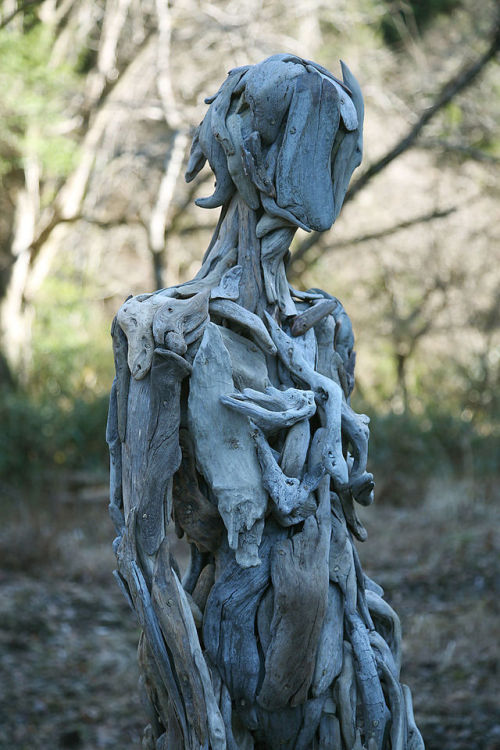Onde As árvores Falam.
Onde as árvores falam.





清水寺ーSEISUIJI * 佐渡にあるお寺 誰もいなくて冷んやりしてて でもすごく懐かしい場所だった
More Posts from Ritasakano and Others


From the article: “Some of Japan’s colors have a lengthy background dating back to the Asuka period (538 ~ 710) and the hierarchical Japanese color system itself can be most easily traced back to 603 AD, when Prince Shōtoko established the first Twelve Level Cap and Rank System in Japan. Based on Confucian values and the five Chinese elements (wood, fire, earth, metal, and water), this particular hierarchy determined one’s rank by quality, rather than one’s heritage. Ranks were made identifiable by specific colors, as follows:
大徳 (Daitoku) Greater Virtue
小徳 (Shōtoku) Lesser Virtue
大仁 (Daijin) Greater Benevolence
小仁 (Shōjin) Lesser Benevolence
大礼 (Dairei) Greater Propriety
小礼 (Shōrei) Lesser Propriety
大信 (Daishin) Greater Sincerity
小信 (Shōshin) Lesser Sincerity
大義 (Daigi) Greater Justice
小義 (Shōgi) Lesser Justice
大智 (Daichi) Greater Knowledge
小智 (Shōchi) Lesser Knowledge
Within this system, the kinkiji (禁色), meaning “forbidden colors” were exclusively designated for use by only the highest ranking government officials and their robes. For example, the robes of the kuge (公家, the dominant aristocratic class in Kyoto’s imperial courts) were of the color Ōtan (orange), therefore the use of this color by any other lower rank was strictly prohibited.
As such, the warm orange and red hues came to be associated with power and affluence. Examples of this can also be found in everything from ornamental combs and katana scabbards to the torii gates of Shinto shrines and the shrine-maidens’ garb. On the opposite end of the spectrum (ha!), the yurushiiro (許し色, “permissible colors”) were usable by commoners.”
I find it particularly interesting that at this early period in Japanese development, they were of course still using Chinese philosophy and science to systematically organize something very abstract and unscientific as what color clothes you should wear– and not only that, but using Chinese science to determine that some colors should be forbidden in society to some people, and thus literally color-code peoples’ castes using a color system based on magic! :)
Um misto de arte e de dor.











Árvore Pirâmide em feltro bordada. By Rita Sakano
Fofis!!!


Outro crime ambiental no Brasil. E quem continua a sofrer é a população.






フランスで5月までクラウドファンディング中です。
フランスで5月までクラウドファンディング中です。 おまけのミニポスターのイラスト①東京シリーズ
It is cloud funding in France until May.
It is cloud funding in France until May. Illustration of extra mini poster ① Tokyo series
https://fr.ulule.com/shinji-tsuchimochi-les-images-derisoires/news/
-
 unanocheenrio liked this · 2 months ago
unanocheenrio liked this · 2 months ago -
 gildedkisses reblogged this · 1 year ago
gildedkisses reblogged this · 1 year ago -
 randal-mcmandal reblogged this · 2 years ago
randal-mcmandal reblogged this · 2 years ago -
 dtovaranatoth liked this · 2 years ago
dtovaranatoth liked this · 2 years ago -
 loveslutsandpixxidust reblogged this · 2 years ago
loveslutsandpixxidust reblogged this · 2 years ago -
 itsabebelife reblogged this · 2 years ago
itsabebelife reblogged this · 2 years ago -
 vetrmani reblogged this · 2 years ago
vetrmani reblogged this · 2 years ago -
 randal-mcmandal liked this · 2 years ago
randal-mcmandal liked this · 2 years ago -
 goldsummon reblogged this · 2 years ago
goldsummon reblogged this · 2 years ago -
 stimtickle reblogged this · 2 years ago
stimtickle reblogged this · 2 years ago -
 tlstickle reblogged this · 2 years ago
tlstickle reblogged this · 2 years ago -
 stimtickle liked this · 2 years ago
stimtickle liked this · 2 years ago -
 natsukukashii reblogged this · 2 years ago
natsukukashii reblogged this · 2 years ago -
 vienmevoire liked this · 2 years ago
vienmevoire liked this · 2 years ago -
 milflover3000 reblogged this · 2 years ago
milflover3000 reblogged this · 2 years ago -
 scarletkilometers liked this · 2 years ago
scarletkilometers liked this · 2 years ago -
 mazarinedrake reblogged this · 2 years ago
mazarinedrake reblogged this · 2 years ago -
 arthurschmou liked this · 2 years ago
arthurschmou liked this · 2 years ago -
 eternallykakurenbo liked this · 2 years ago
eternallykakurenbo liked this · 2 years ago -
 kokoromonai reblogged this · 2 years ago
kokoromonai reblogged this · 2 years ago -
 gruberson liked this · 2 years ago
gruberson liked this · 2 years ago -
 i-am-a-moonchild reblogged this · 2 years ago
i-am-a-moonchild reblogged this · 2 years ago -
 corgiboobs liked this · 2 years ago
corgiboobs liked this · 2 years ago -
 katenikus liked this · 2 years ago
katenikus liked this · 2 years ago -
 careful-knives reblogged this · 2 years ago
careful-knives reblogged this · 2 years ago -
 daddywolfex liked this · 2 years ago
daddywolfex liked this · 2 years ago -
 careful-knives liked this · 2 years ago
careful-knives liked this · 2 years ago -
 casspurrjoybell-1 reblogged this · 2 years ago
casspurrjoybell-1 reblogged this · 2 years ago -
 iodineorangejuice liked this · 2 years ago
iodineorangejuice liked this · 2 years ago -
 micah-shibui liked this · 2 years ago
micah-shibui liked this · 2 years ago -
 ladysaribu liked this · 2 years ago
ladysaribu liked this · 2 years ago -
 7000said liked this · 2 years ago
7000said liked this · 2 years ago -
 oda-princess liked this · 2 years ago
oda-princess liked this · 2 years ago -
 ta260 liked this · 2 years ago
ta260 liked this · 2 years ago -
 odorumeruhentokei liked this · 2 years ago
odorumeruhentokei liked this · 2 years ago -
 frankjc3rd liked this · 2 years ago
frankjc3rd liked this · 2 years ago -
 lisarafox liked this · 2 years ago
lisarafox liked this · 2 years ago -
 kpbattle liked this · 2 years ago
kpbattle liked this · 2 years ago
